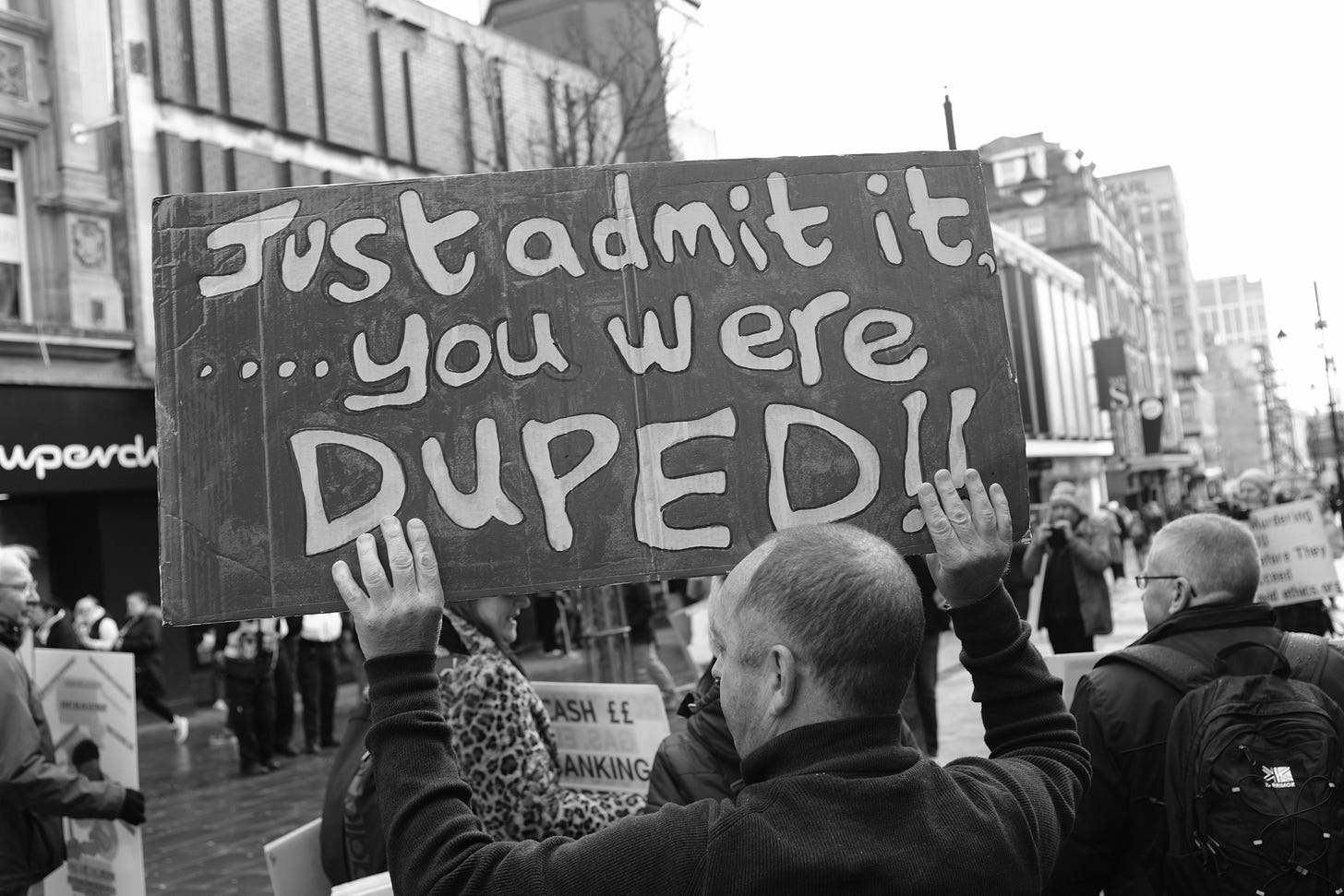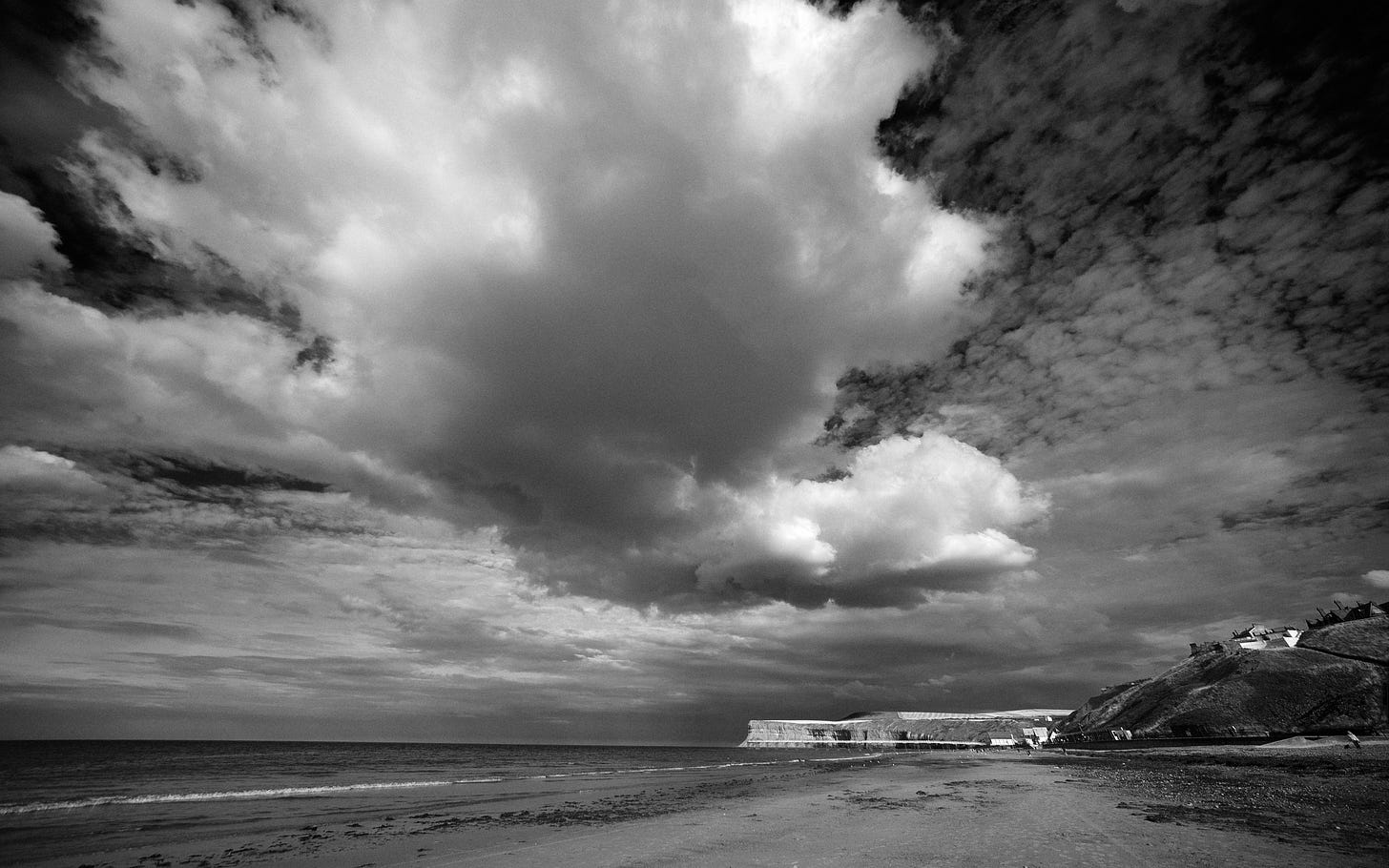Official: my "court" is "not known to law"
Ministry of Justice confirms that legal instruments are being issued against "ghost" non-entities with no statutory basis
The “ghost court” scandal ratcheted forward another notch in the last few days. After two months of effort, including a forced review and an apology, I finally received a Freedom of Information Act response from the Ministry of Justice. I had asked about the constitution of the purported court on my Single Justice Procedure Notice (SJPN) — “North Cumbria Magistrates’ Court” — distinct from the name that later appeared on my summons, “North and West Cumbria Magistrates’ Court”.
The bottom line could not be clearer: neither exists in law.
The clash is now stark. On one side, HM Courts and Tribunals Service insists that “court names have no legal meaning” and that what matters is that magistrates exist somewhere in a Local Justice Area. On the other side stand centuries of English common law and international civil rights law. Article 6 of the European Convention on Human Rights, reinforced by Strasbourg case law, requires that a tribunal must be “established by law.” That legal identity is distinct from the mere fact that magistrates are appointed or that a venue is authorised. The tribunal is the legal anchor — it ties together the initiating paperwork, the trial, and downstream enforcement.
But the MoJ’s own FOI response confirms the problem: the initiating SJPN itself named no court at all. The only reference was a return address labelled “North Cumbria Magistrates’ Court” — an entity they have admitted is not known to law. At that point, the entire “delegated constitution of a national magistrates’ bench” theory collapses, as no real court took hold.
In other words: if the “court” on the initiating paperwork is a nothing, then you cannot build a something — like a trial or conviction — upon it. That’s not pseudo-law; it’s the settled doctrine of landmark cases like MacFoy and Anisminic. And as Denning taught us, any attempt to “fix” the defect afterwards merely compounds the void, it cannot cure it.
The consequence? Convictions built on this foundation are not law on stone but sand — unstable, and prone to collapse at any time.
The Freedom of Information Act response
I asked:
“Please provide the statutory instrument, administrative order, or formal documentation lawfully constituting North Cumbria Magistrates’ Court as a Magistrates’ Court authorised to issue SJPNs.”
They said:
“The MOJ does not hold any information in the scope of your request. This is because we are not the appropriate authority on this matter.”
That means:
There is no legal constitution of “North Cumbria Magistrates’ Court” — it is not known to law.
I asked:
“Please provide the legal basis authorising North Cumbria Magistrates’ Court to issue SJPNs.”
They said:
“The courts do not issue SJPNs, rather they are issued by the prosecutor (who are independent from the MOJ) as set out in section 29 of the Criminal Justice Act 2003.”
That means:
The SJPN I received was not from a court at all. The only “court” reference was a return address labelled NCMC — which the MoJ has admitted is not a lawful tribunal. As it happens, my SJPN doesn’t say explicitly who it is from at all, another defect.
I asked:
“Please provide any HMCTS records confirming North Cumbria Magistrates’ Court was recognised as an operational Magistrates’ Court authorised to issue SJPNs.”
They said:
“The MOJ does not hold any information in the scope of your request.”
That means:
There is no administrative record recognising NCMC as a court at all.
I asked:
“Please provide any HMCTS internal policies or guidance governing the use of unlisted or non-statutory court names (such as ‘North Cumbria Magistrates’ Court’) on SJPNs.”
They said:
“The concept of ‘unlisted or non-statutory court names’ is not one known to law, and thus guidance would be inappropriate.”
That means:
Even HMCTS itself concedes such names have no legal meaning.
What next? Follow the money!
I am in court in Carlisle on Monday and will be arguing that my case is void ab initio based on this defect. We cannot even consider my Section 142 application to re-open the case “in the interests of justice,” because its very gateway criteria are not met. No court was ever seised of the matter, no valid trial took place, and no lawful order exists to review.
The bench is unlikely to love me for saying this, because it implies that everything they have been doing for years under the name of this “ghost court” is void — but that is their doing, not mine. If you counterfeit courts as a policy, then expect a similar outcome to counterfeiting bonds or professional credentials. While there is a legal fight on, that is only one leg of the stool.
The second leg is the narrative battle — what you are reading here. HMCTS can dismiss challenges as “pseudo-legal,” but the public can see the contradiction: the law requires a court to be named and established by law, yet the bureaucracy insists “court names don’t matter.” Ordinary people know the words “magistrates’ court” mean something, not nothing, and claims to the contrary are absurd.
The third leg is the money. How many fines have originated from instruments that are nullities? Where is the money going? (My FOI question on the cash trail was stonewalled, which tells me all I need to know.) What is the exposure of the taxpayer to “ghost court” fine refunds if and when this collapses? At what point do the Treasury, National Audit Office, and Cabinet Office have to install adult supervision of functionaries “playing court” with rogue IT systems?
I used to work as a consultant for Oracle back in the 1990s. Concepts like referential integrity are not novel. If you have a foreign key in a database to a court name, it has to reference a parent that is real. Court names are claims to juridical authority — they absolutely do have legal meaning, and they have to be traceable to a statutory instrument to be real. Without that authority, you only have the equivalent of legalese junk mail, not a court summons. It’s hardly PhD computer science.
How did this debacle even happen? Where was the audit and compliance by the Ministry of Justice? You can’t just stick the word “bank” on a company name and act like a bank, no matter how good your accountants are. You need to be appropriately licensed as an institution. The same applies to courts: they are more than judges and hearings. The digitisation of UK courts was botched, and it is obvious given my tech background. HMCTS patched in extra rows in a database, with nothing to back them, and hoped nobody would notice.
Oops.
😎
PS — Two weeks ago I wrote to the Lord Chancellor asking a very simple question: is either “North Cumbria Magistrates’ Court” or “North and West Cumbria Magistrates’ Court (1752)” a real court? I have had no reply.
Surely it should be easy for the public to know which court names are officially recognised — to distinguish a genuine tribunal from a phoney label. If that information can’t be provided, then either we are dealing with catastrophic incompetence or something far worse: that all of these entities are fictions, propped up by IT codes and bureaucratic bluster.
That cannot happen. Could it?




We are called to stand together in support when needed and Physical and Spiritual support are both equally important at this time. I hope the hearing room tomorrow is spacious. ❤️
Martin, I don't understand this: “The MOJ does not hold any information in the scope of your request. This is because we are not the appropriate authority on this matter.” How could they not be the appropriate authority on this matter? If they aren't, then which organization could possibly be the appropriate authority? Here in the US we say, "You can't tell the players without a scorecard." Who are the possible players in this convoluted mess of various organizations at various levels, and which of them has appropriate authority for what responsibilities? Is the MOJ actually the appropriate authority and know this and are trying to push away potential liability? Or are the players so numerous and so poorly defined as to their individual authorities and responsibilities that even the MOJ doesn't know which organization (even themselves) actually is the authority for this?
Here in the US, the Supreme Court is defined in the Constitution, but it is the Congress which is responsible for setting up and monitoring the lower courts, the responsibility of the President to nominate people to be judges in that system, and the responsibility of the Congress to impeach and remove corrupt judges. It's round-about but relatively clear, yet even so, many of these have shirked those defined responsibilities for political reasons recently. Our Justice Department has nothing to do with this structure but rather is charged with enforcing the law using this structure of courts and judges.
The use of the term "Ministry of Justice" for the UK can confuse US folks, because it sounds like our term covering the "Justice Department" which has nothing to do with the Judicial System per se. So can you put together a "scorecard" that defines the UK judicial structure for us ignorant rubes in the US so we can follow the players and understand you when you FOI some part of that system for specific information - and don't get that information when you should? Which are confused, which improperly defined, which acting outside of any remit, which avoiding/evading responsibility, which pushing away liabilities, etc.?